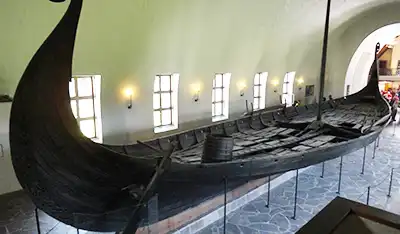The Oseberg ship, discovered in a large burial mound in Norway in 1904, is one of the most well-preserved Viking ships ever found. This archaeological treasure offers a profound glimpse into Viking seafaring skills, burial practices, and artistic achievements.
Discovery and Excavation
In the summer of 1904, a farmer named Oskar Rom discovered the Oseberg ship buried on his property in Vestfold County, Norway. The subsequent excavation, led by archaeologists Gabriel Gustafson and Haakon Shetelig, revealed a magnificent ship that had served as a burial chamber for two women. The excavation was meticulous, with every detail carefully documented, laying the groundwork for future archaeological practices.
The ship
The Oseberg ship is approximately 22 meters long and 5 meters wide, constructed primarily from oak. Its sleek, elongated shape, coupled with a shallow draft, made it ideal for both coastal navigation and river travel. The ship is renowned for its elaborately carved bow and stern, featuring intertwined animal motifs and intricate patterns that reflect the Vikings’ artistic sensibilities and their connection to nature.
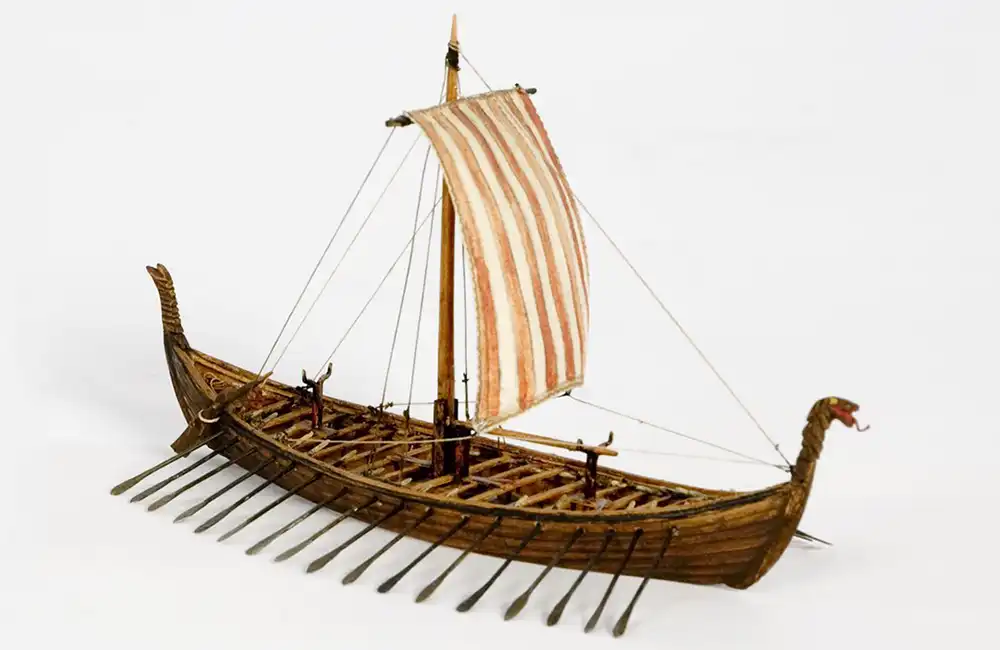
The Burial Site
The ship’s primary purpose was as a burial vessel for two high-status women, likely of royal or noble lineage. Alongside their remains were an array of grave goods, including textiles, wooden furniture, and a variety of tools and utensils. The presence of these items suggests the women were of significant importance and provides valuable insights into the domestic and ceremonial aspects of Viking life.
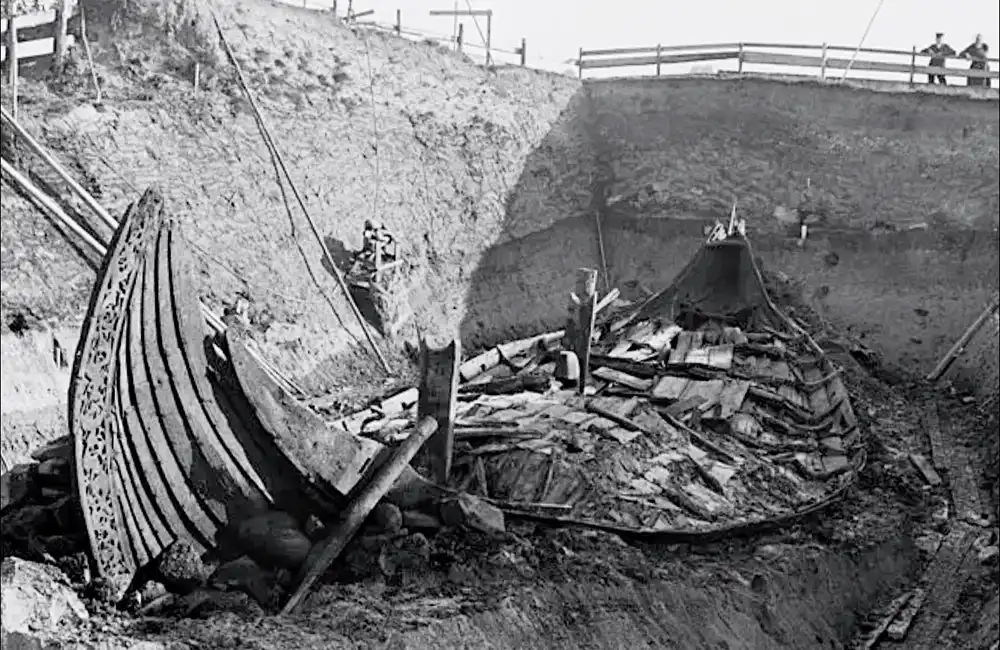
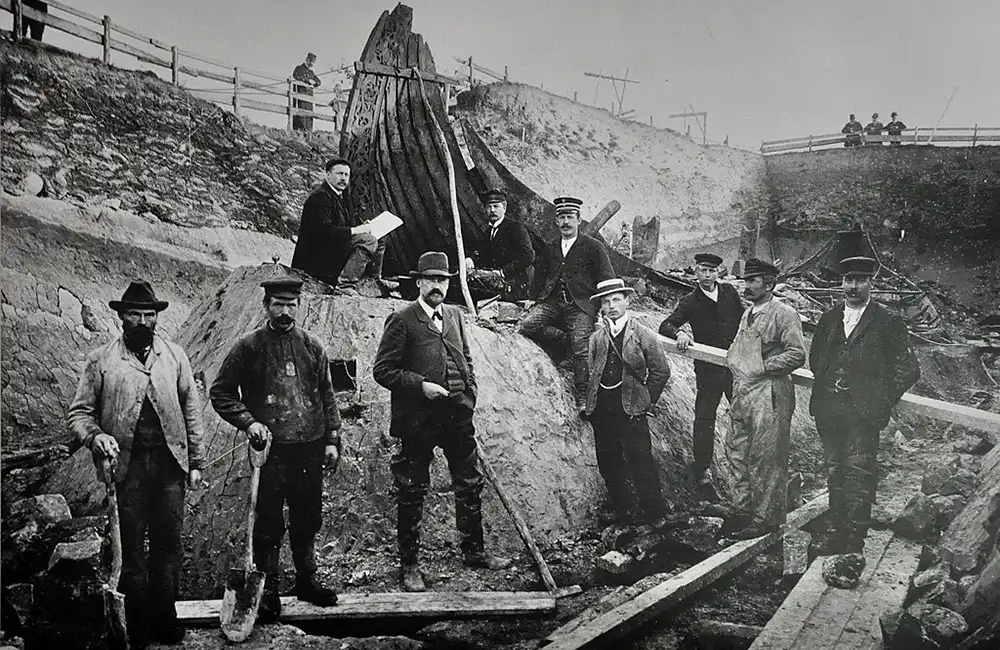

Historical and Cultural Significance
The Oseberg ship is a testament to the Vikings’ advanced shipbuilding techniques and their seafaring capabilities. The craftsmanship of the ship’s carvings indicates a highly developed artistic culture, while the grave goods reveal a society that valued both functionality and aesthetics. The ship has profoundly influenced our understanding of Viking history, showcasing their engineering prowess and their rich cultural heritage.
Preservation and Display
Preserving the Oseberg ship has been a challenging endeavor, requiring innovative conservation techniques to prevent the deterioration of the wood. Today, the ship is the centerpiece of the Viking Ship Museum in Oslo, where it continues to captivate visitors from around the world. Ongoing research and technological advancements ensure that new discoveries about the ship and its context are continually being made.
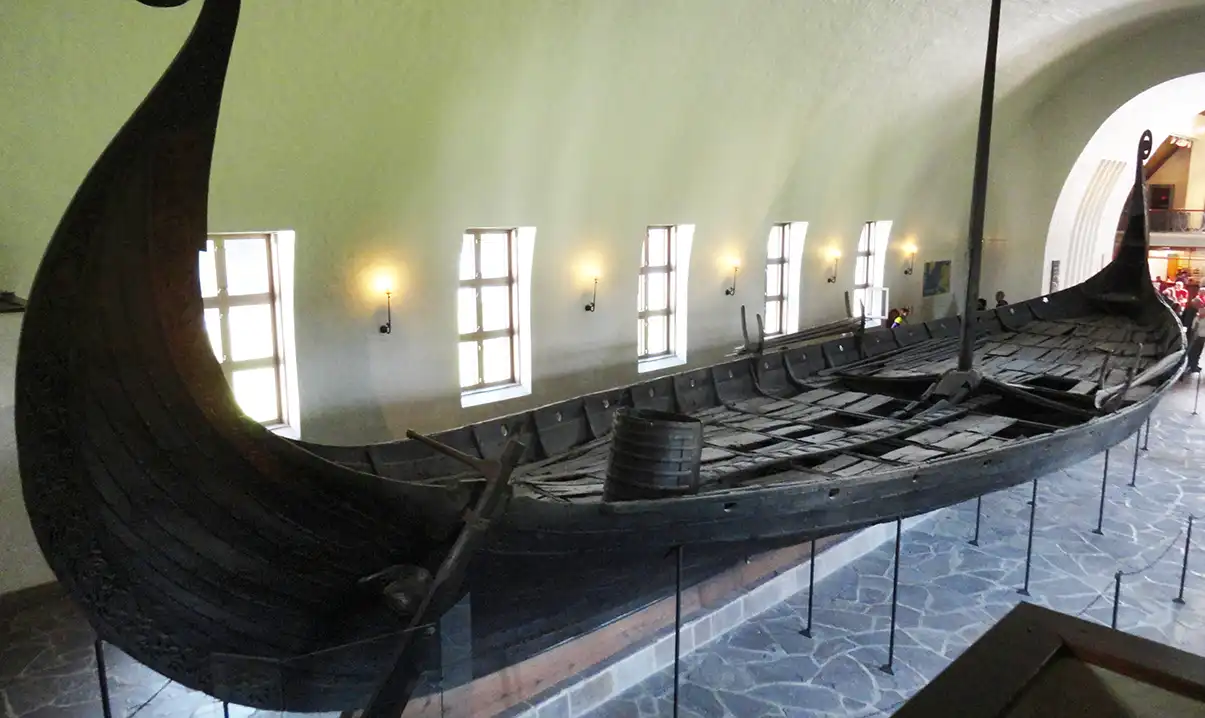
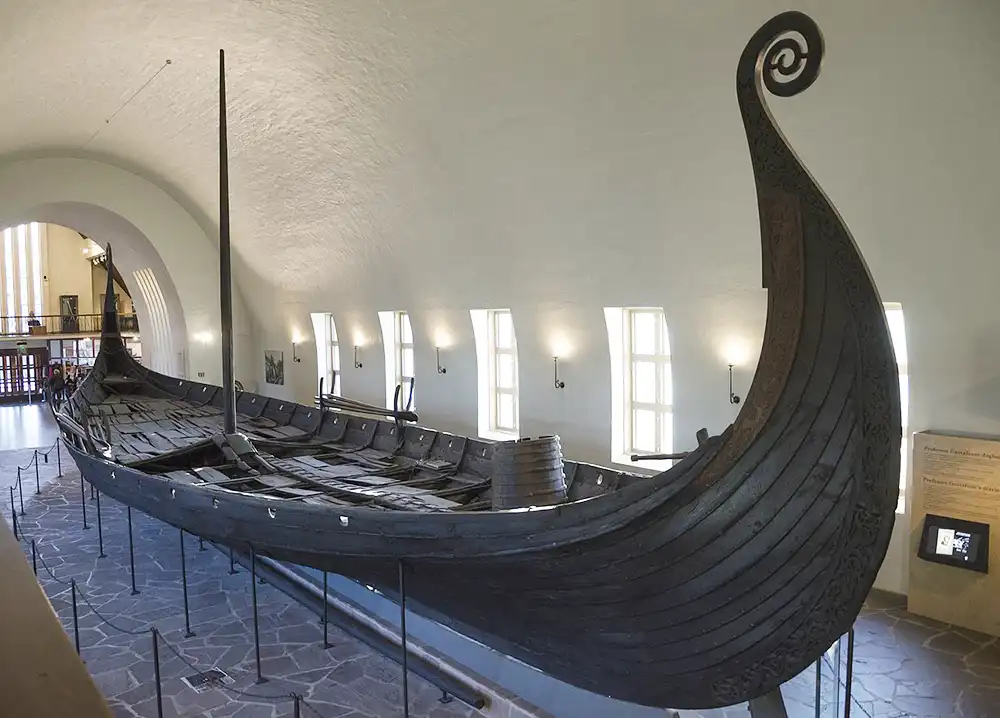
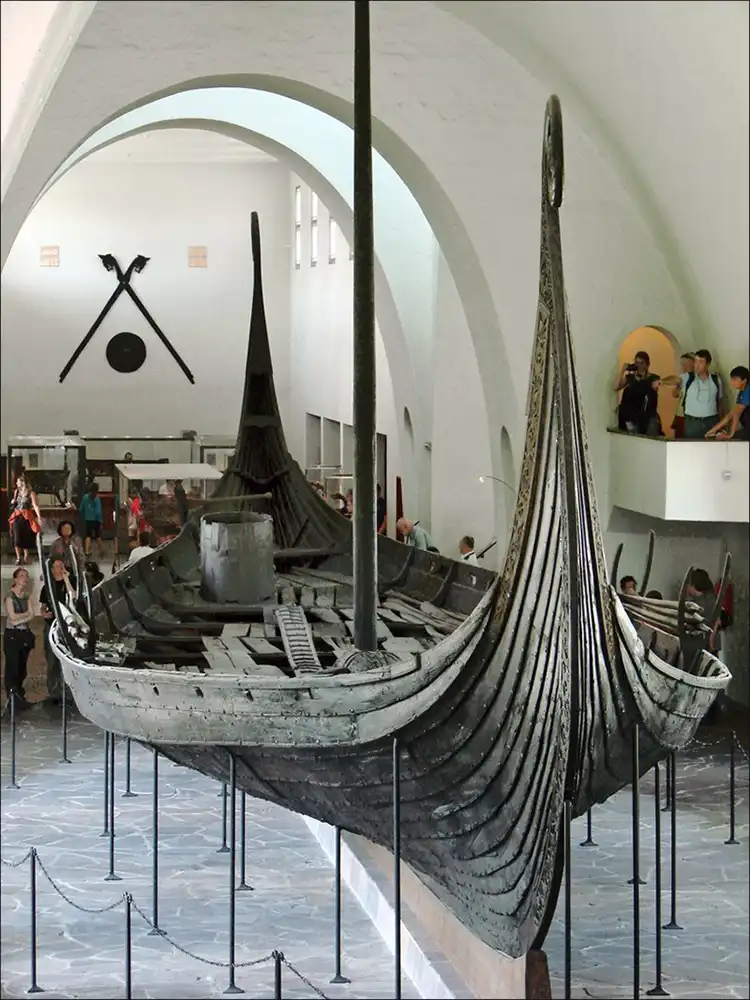
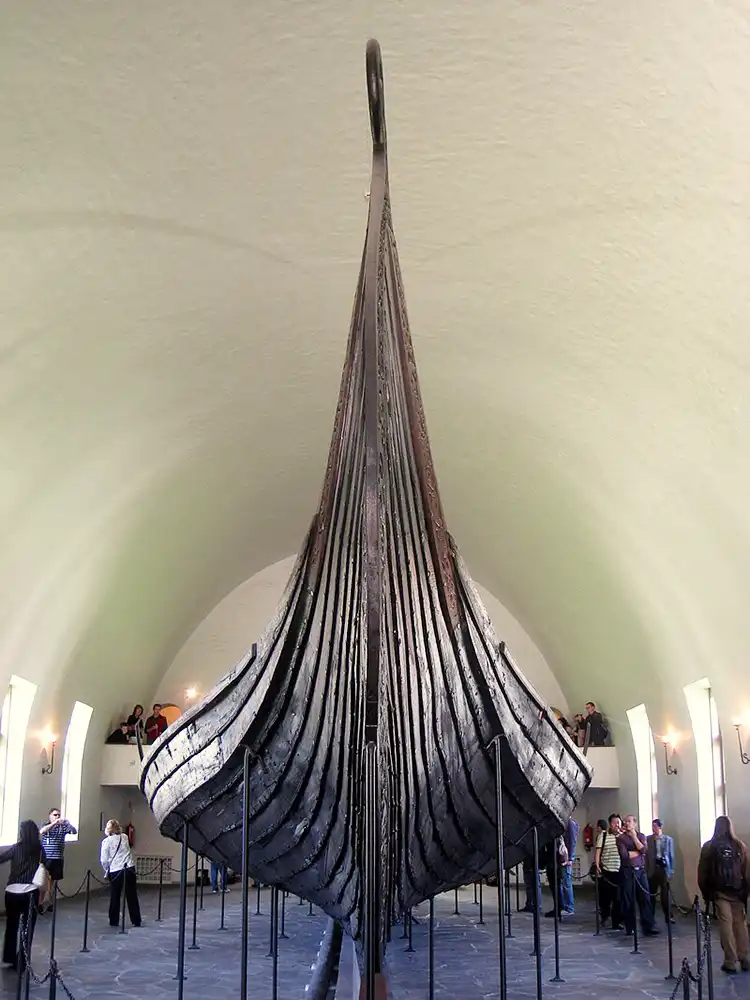
Conclusion
The Oseberg ship remains one of the most significant archaeological finds from the Viking Age. It not only exemplifies the technical and artistic achievements of the Vikings but also offers a poignant glimpse into their burial customs and societal structure. As research progresses, the Oseberg ship continues to reveal more about the enigmatic Viking world, maintaining its status as a cornerstone of historical and cultural knowledge.

